Pain in the grass: Crabgrass
Crabgrass got you crabby? Learn more about its biology to help hone your management strategies.

Many odd grasses growing in a lawn are casually referred to as crabgrass, but the danger in treating all odd grass species the same is that they may have different lifecycles and require different tactics for successful control.
In Michigan there are two primary species of crabgrass, smooth crabgrass (Digitaria ischaeum) and large or hairy crabgrass (D. sanguinalis). To determine if you have one of these real-deal crabgrasses, look for these characteristics:
- Light/bright green color. Color is influenced by environmental conditions and personal perceptions, but in general the crabgrasses are typically a lighter or brighter green color than our typical cool-season turf grasses (i.e., Kentucky bluegrass, ryegrasses and fescues) (Photo 1).
- Thick leaf blades. Both crabgrasses usually have thicker leaf blades than our turf grasses (Photo 1).
- Rolled vernation. Leaves are rolled as they emerge from the sheath (like a rolled-up newspaper or magazine unfurling) (Photo 2).
- Membranous ligule. Peel the leaf back, and right where it meets the sheath there is a thin clear/white membrane structure (Photo 3).
- No rhizomes. If you dig up crabgrass it has fibrous roots, no underground stems.
- No real stolons. While crabgrasses do not have trailing stems that can root on the soil surface, you will occasionally see a large plant rooting at a node.
- Hairs, maybe, maybe not. Large or hairy crabgrass has profuse hairs along the leaves and stems. Smooth crabgrass, while mostly smooth may still have occasional hairs.
- Flowers and seedheads. flowers and seeds are formed on finger-like structures late in the summer (Photo 4).
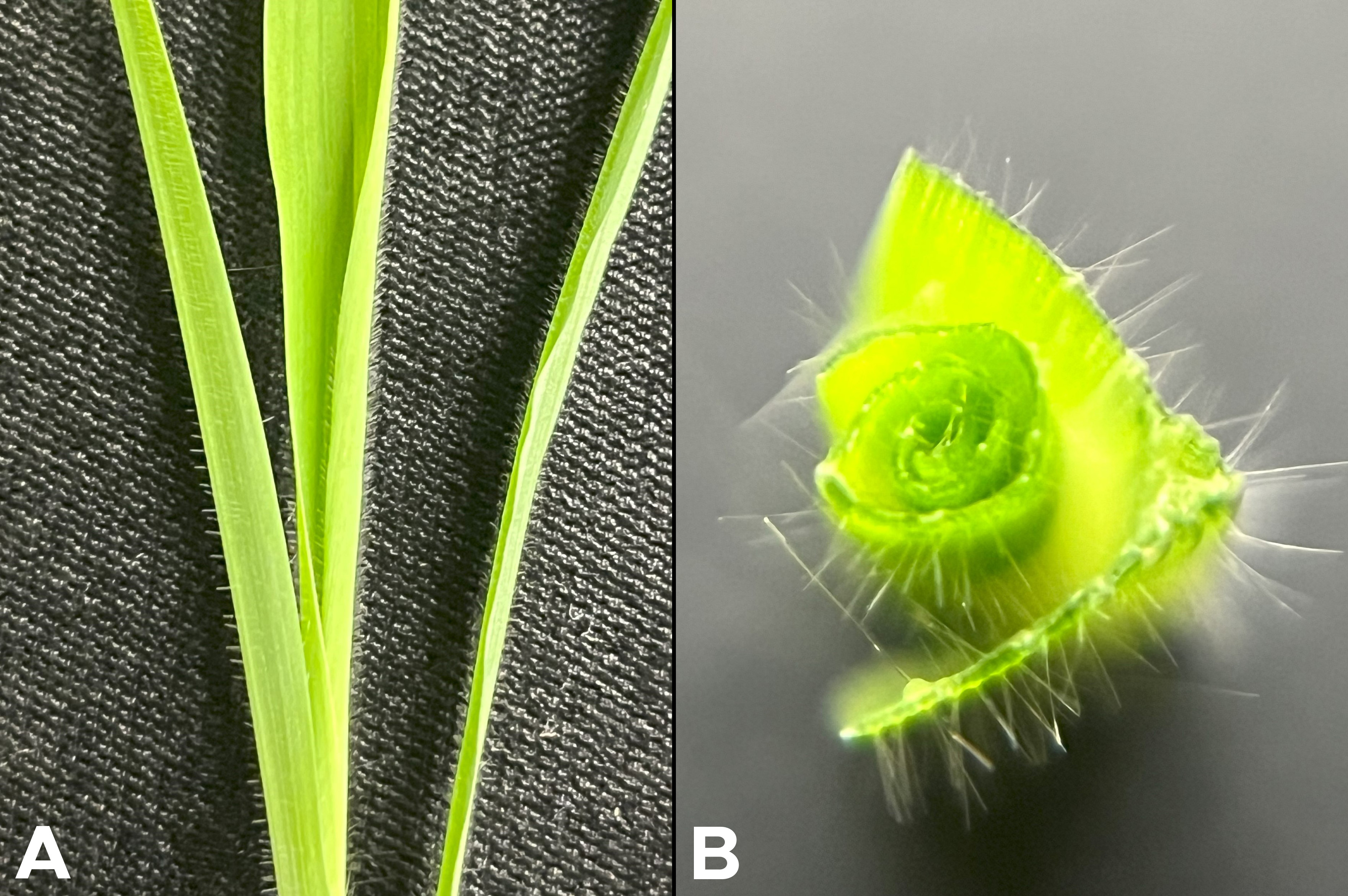
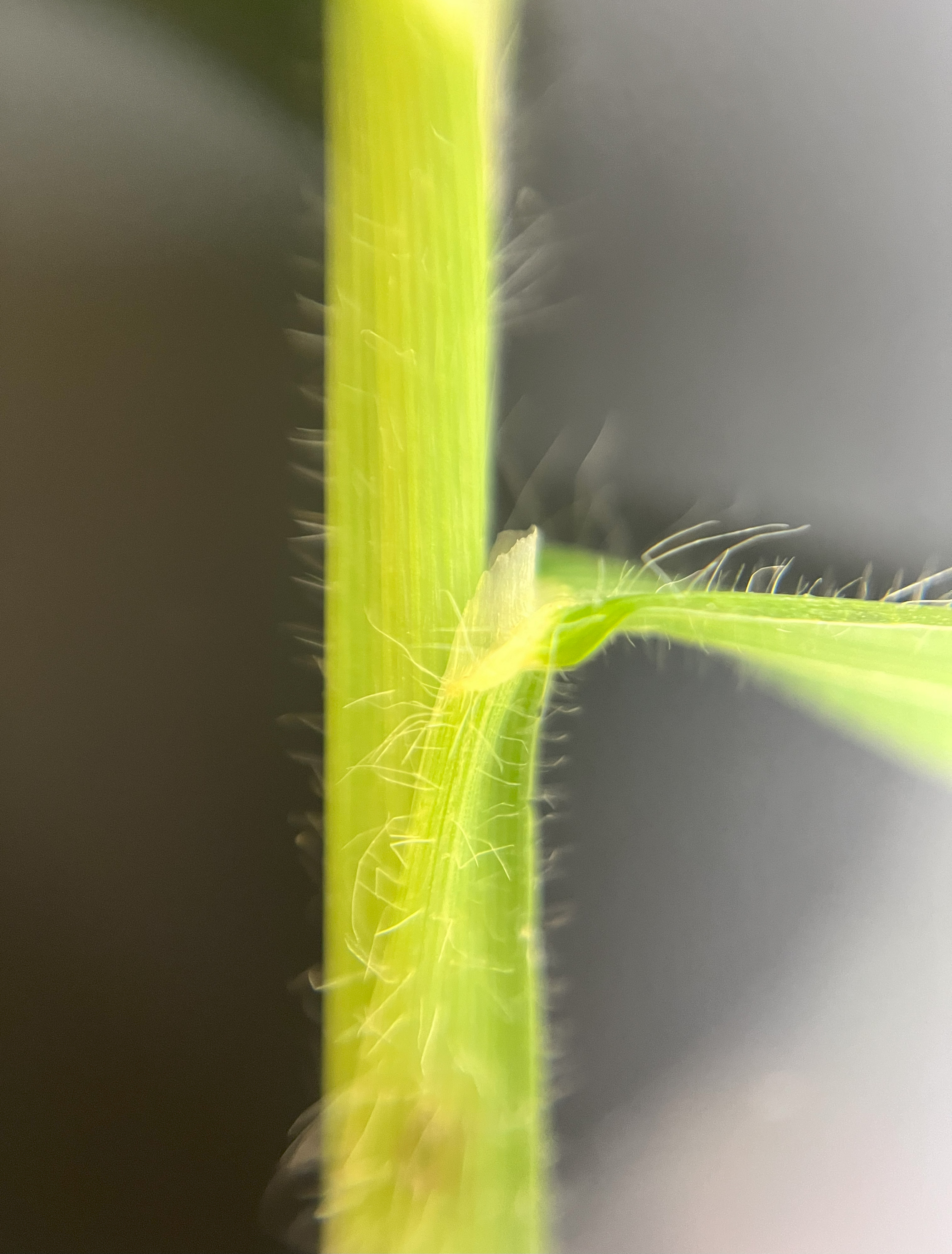
Both crabgrasses are annuals, which were introduced to the state of Michigan. As annuals, they typically germinate from seeds in the early spring, then flower and produce seeds in the late summer before dying; next spring the process starts again.
Managing the two species is thus far the same, so they will be referred to jointly as crabgrass for the remainder of the article. As described with other grasses in this series, managing crabgrass can present challenges due to the similarity in biology to our desired cool-season grass species.
Prevention
According to research by Masin et al. (2006), crabgrass seed survives in the soil in a lawn setting for up to 3 years, so preventing crabgrass from going to seed can have a relatively rapid impact on the issue in future seasons.
Crabgrass seed (Photo 5) may also be making its way into your property from outside sources. Some actions you may be able to take to prevent this include purchasing certified weed-free grass seed when you replant areas, cleaning equipment used elsewhere before it comes to your lawn to prevent seed hitchhikers, and preventing crabgrass plants in your ornamental beds (Photo 6) or along property lines from going to seed. Most of these single plants can be easily pulled or dug out by hand. Wildlife entering your lawn with seeds on their fur or deposited with their feces may not be as easy to prevent, so keeping your eyes open for odd looking grass can help you gain control before it becomes a serious problem.
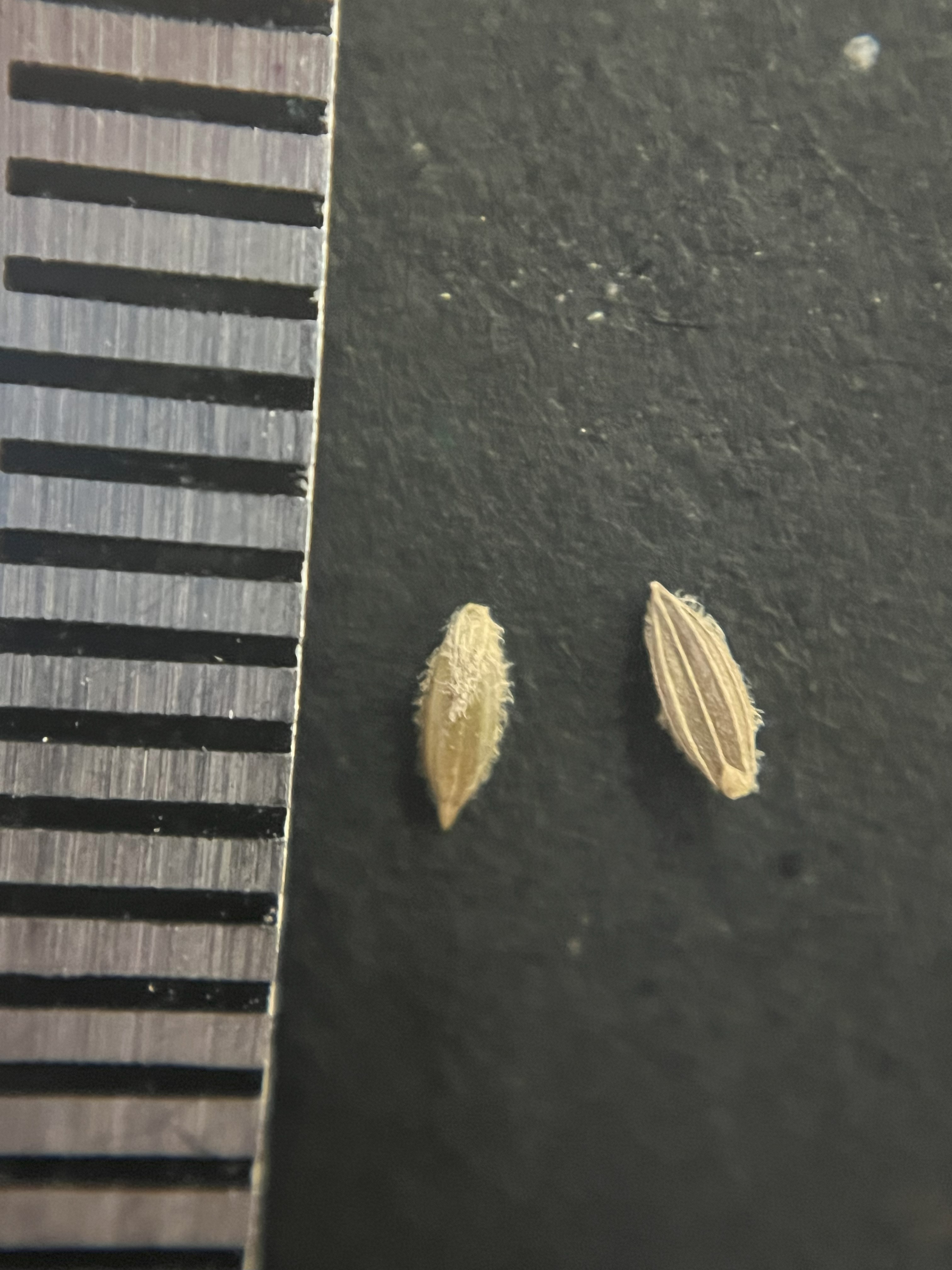
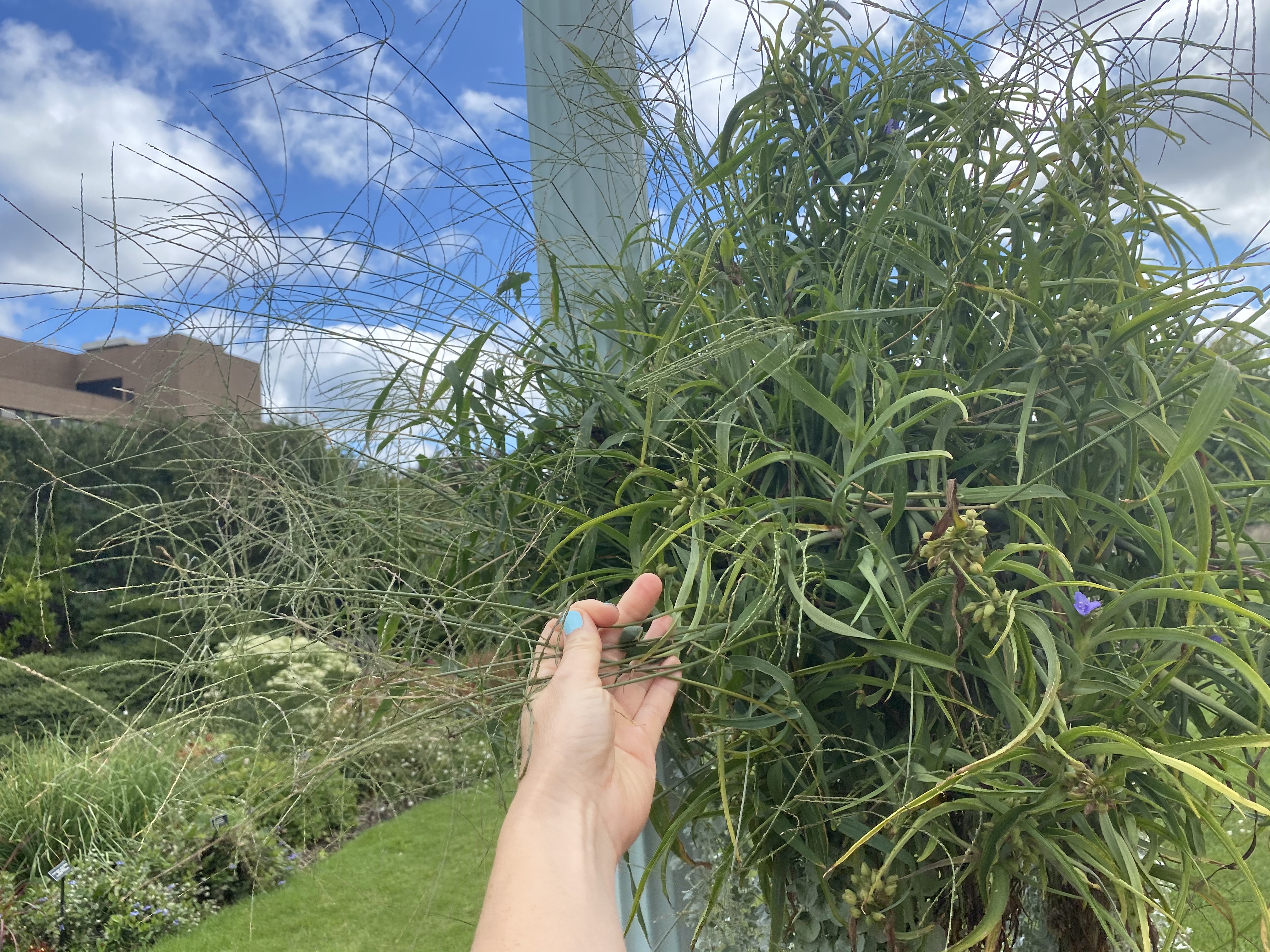
Cultural controls
Anything that can be done to favor the health of your desired grasses and avoid having gaps in the canopy will create a lack of space for crabgrass to emerge and thrive. These practices include choosing the best grass species or blend for your conditions, using an appropriate seeding rate, raising your mowing height to a minimum of 3 inches, watering when the weather is dry and boosting the system with fertilizer. You can find more information on these practices at the links and on Michigan State University Extension’s Home Lawns and Smart Lawns websites.
Herbicides — Early spring, before emergence
Because crabgrass must go through the seed stage of the lifecycle every spring, there are some preemergence herbicides that can target this vulnerable stage. Timing of these applications is critical to have the herbicide present at the correct time and inhibit successful emergence. To see what timing is appropriate for your specific area, visit our article, “Timing preemergence herbicides in the spring.”
When it comes to choosing a product, there are several options out there. Those most commonly available to residential users all have active ingredients that target seedling root elongation and many come packaged with fertilizer.
|
Mode of action |
Common active ingredients |
Example products as of 2025* |
|---|---|---|
|
Seedling root inhibitors |
Dithiopyr
|
Menards Premium Crabgrass Preventer with Lawn Food
|
|
Pendimethalin
|
Scott’s Turf Builder Halts Crabgrass Preventer with Lawn Food |
|
|
Prodiamine |
Barricade 4FL |
*Product names and active ingredients frequently change, so always be sure to read the label and look for the active ingredients (usually in one of the front lower corners in tiny print).
When applying a preemergence product, note that irrigation or rainfall is needed to activate the herbicide. See the label for more details.
Using the preemergence herbicides mentioned above is not compatible with reseeding areas of your lawn as the herbicide will also inhibit the successful germination of your desired grass seed. Please refer to the label for the wait time between herbicide application and replanting. There are a limited number of products with the active ingredient mesotrione that are intended to prevent the germination of crabgrass and broadleaf species emerging from seed at the time of seeding or renovating a lawn. Pay special attention to label details on the grass species with which these products can be used.
Herbicides — Summer, plants present
Our cool-season turfgrasses grow best when temperatures are in the range of 65-75 degrees Fahrenheit. In contrast, crabgrass thrives at higher temperatures of 80-100 F. So, as we move through the summer months and temperatures rise, our preferred turfgrass growth slows and may become stressed, meanwhile crabgrass growth has the opportunity to explode.
For residential users, there is one main herbicide active ingredient that is effective at controlling crabgrass, quinclorac. This active ingredient is often packaged with other active ingredients to also provide control of broadleaf weeds, like the plantains or dandelion. Example products include Roundup for Lawns, Ortho Weed B Gon plus Crabgrass Control, and Trimec Crabgrass plus Lawn Weed Killer, among many others. As with any pesticide application, be sure to double check the label at the point of purchase to ensure it contains the active ingredient of interest and that it is suitable for the intended application area.
Lawn care professionals can choose between quinclorac (e.g., Drive XLR8) and another active ingredient, fenoxaprop-ethyl (e.g., Acclaim Extra) (Photo 7). The key considerations are listed below. More details are in the table following these considerations.
- Quinclorac is most effective for crabgrass that has three tillers or less.
- Quinclorac can boost broadleaf activity when tank-mixed with other broadleaf-specific herbicides, especially 2,4-D and MCPP.
- Quinclorac can provide excellent control of some broadleaves, like white clover and dandelion, on its own.
- Quinclorac can miss excellent postemergence crabgrass control when crabgrass is at the two-to-three tiller stage.
- Adding methylated seed oil to quinclorac will improve efficacy.
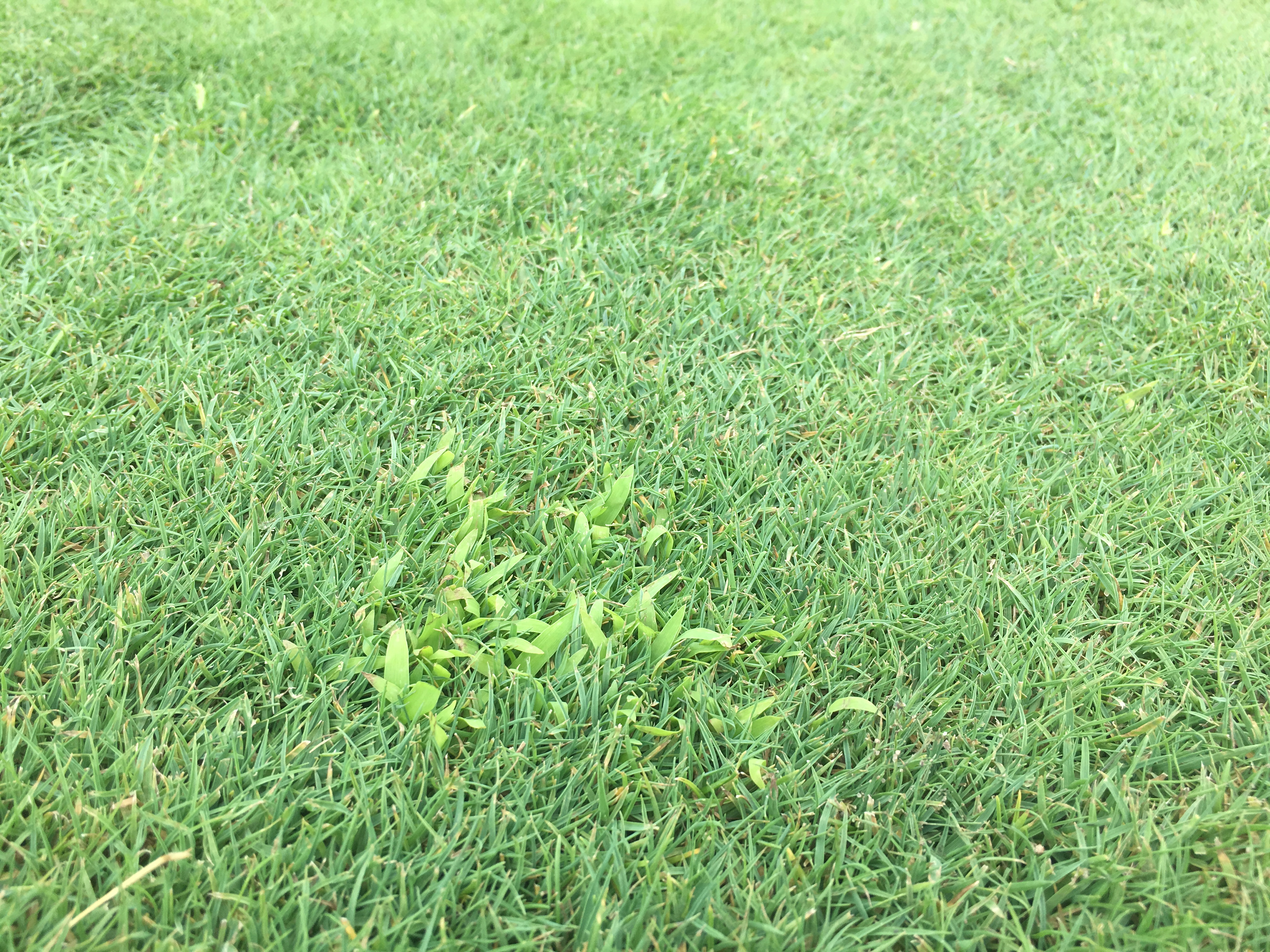
Whether crabgrass is small (one-to-three leaf – one tiller) or when it is gorilla-sized (four tillers and over), quinclorac will provide excellent control of crabgrass and will not result in injury when applied on new cool-season turf seedings.
Fenoxaprop-ethyl is equally effective as a post-emergence crabgrass herbicide and differs from quinclorac in these ways:
- Fenoxaprop-ethyl can be applied at any crabgrass growth stage and provide excellent control.
- Fenoxaprop-ethyl can provide better goosegrass control than quinclorac.
- Fenoxaprop-ethyl will not provide any broadleaf weed control on its own and should not be tank-mixed with 2,4-D, MCPP or any other phenoxy herbicides.
- Adding a non-ionic surfactant to fenoxaprop-ethyl will improve efficacy.
There are other herbicides that can provide good post-emergence crabgrass control. MSMA can be effective for crabgrass control but is labeled for use only on golf courses and sod farms. Dithiopyr (Dimension and others), in addition to preemergence control, can be used for postemergence control on crabgrass up to one tiller. Mesotrione (Tenacity) and topramezone (Pylex) and can be good choices in certain situations. Both products can be applied on the same day of seeding Kentucky bluegrass (be careful and read the label about applications on other cool-season turf species) for crabgrass control during establishment. Also, both can provide good control of some broadleaves. There are many tank-mix options available and warranted depending on the mix of weeds that may be present in different areas.
Comparison of quinclorac and fenoxaprop-ethyl herbicides for lawn care professionals:
|
Question |
Quinclorac |
Fenoxaprop-ethyl |
|---|---|---|
|
Loss in some post-crabgrass efficacy? |
Yes – two-to-three-tiller growth stage. |
No – works well at all growth stages. |
|
Stand-alone broadleaf activity? |
Yes – particularly white clover, dandelion and speedwell. |
No. |
|
Good tank-mix partner? |
Yes – synergistic effect when mixed with phenoxy herbicides (2,4-D, MCPP). |
No – do not mix with phenoxy herbicides as there is some antagonism. |
|
Goosegrass control? |
No. |
Yes. |
|
Turfgrass injury? |
No – safe on newer seedings. |
Sometimes – can injury some Kentucky bluegrass cultivars in high heat. |
After crabgrass control has been completed, consider reseeding any bare areas and revisiting the cultural controls section of this article to give your lawn the best chance against crabgrass.
Visit Michigan State University Extension’s Home Lawns website for more information on lawn care from the Michigan State University turfgrass team.
The authors would like to thank Thomas Nikolai for his review of this article.
This work is supported by the Crop Protection and Pest Management Program [grant no 2024-70006-43569] from the USDA National Institute of Food and Agriculture. Any opinions, findings, conclusions, or recommendations expressed in this publication are those of the author(s) and do not necessarily reflect the view of the U.S. Department of Agriculture.



 Print
Print Email
Email
